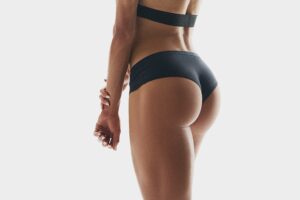One of the most important aspects of any skin care program is sunscreen. While it can be confusing to try and determine which sunscreen is right your needs, Dr Charles Perry and his staff at Chrysalis Cosmetics are available to help facilitate obtain a product that will protect and nourish your skin from the harmful ultra violet radiation and oxidation that occurs. Certainly we offer surgical procedures that not only enhance and lift the signs of aging seen in the face and eyes (for pictures visit) including blepharoplasty, forehead lifts, and facelifts. However besides the surgical procedures and non-surgical procedures such as Restylane, Juvederm, Elevess and Botox we also offer skin care programs and nutritional supplements to help enhance your look.
We always recommend starting with a sunscreen that blocks both UV A (320-400 nm) and UV B (290-320 nm). UV B is absorbed by the epidermis and is associated with the erythema following sun exposure. SPF or sun protection factor is the calculation of the minimum dose of sun radiation required to cause erythema on protected skin versus unprotected and is presented as a ratio. Thus SPF only measures sun screens effectiveness against UV B radiation. SPF 15-30 is high protection and SPF over 50 is probably unnecessary as SPF 30 blocks around 90% of UV B radiation. However it is important to consider that UV A radiation makes up the majority of all ultra violet radiation (95%) remains constant throughout the year and penetrates deeper than the epidermis and into the dermis which is the cause of elastosis and photoaging suppresses immune function and can cause skin cancer.
Sunscreens use titanium dioxide and zinc oxide to physically block the all UV radiation. These physical blocking agents are now being micronized (10-50 nm) so that they are less visible on the skin and spread much easier. For your convenience all of our products utilize some physical blocker. (Obagi, NIA, iS Clinical, Vivite, Elta MD). Many products also utilize Avobenzone and Octocrylene which filter UV A light and are photostable when used together. Homosalate and Oxybenzone, Octisalate, are also filter UV B radation and are often combined with the physical blocking agents for texture and ease of wear.
Remember to apply and reapply your sun screens every 3-4 hours and wear one every day. Lets us know how we can help you.



